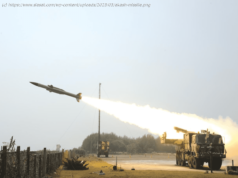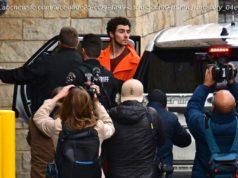The Austin bomber is dead, but his campaign of terror serves as a stark reminder that government and technology can’t keep us completely safe.
AUSTIN, Texas — The Austin bomber is dead. In an overnight police chase, the suspect, a 24-year-old white man, blew himself up in his car as police closed in.
A law enforcement official told The New York Times the man was from Pflugerville, a suburb north of Austin. Right now, that’s all we know about him. Authorities have not released a name or a motive or anything else. There might be more suspects at large, there might be more bombs in play. Time will tell. [UPDATE: Local and federal law enforcement sources have released the name of the suspect, a 24-year-old man from Pflugerville, a suburb north of Austin.]
The bomber’s suicide is the latest turn in a strange and harrowing chain of events here since March 2, when the first bomb went off in North Austin, killing a 39-year-old man. Ten days later in East Austin, a pair of bombs killed a 17-year-old and severely injured his mother, and nearly killed a 75-year-old woman. All these bombs were apparently hand-delivered, and the victims were all African-American or Hispanic.
That prompted speculation that the bombings were hate crimes targeting racial minorities. But then on Sunday, a roadside bomb detonated by a tripwire laid across the sidewalk exploded in the affluent and mostly white neighborhood of Travis Country in southwest Austin, injuring two white men.
The tripwire device raised the terrifying possibility that the bomber — or bombers — were ratcheting up their campaign, and that Iraq War-style IEDs might go off anywhere in the city.
But then things changed again. Early Tuesday morning, a bomb went off at a FedEx processing center just north of San Antonio. Authorities said it had been mailed from Austin and was bound for an address in Austin. Hours later, another unexploded bomb was found at a second FedEx facility near the Austin airport.
All of it seems to defy any discernable pattern. The most important missing element is motive. In the greater Austin area, there are any number of radical communities the bomber might have been part of, from Islamists to left-wing extremists to white supremacists. And of course he might not have been part of any group, but simply a lone actor intent on sowing chaos and death. The equivalent of a mass shooter, with a different weapon.
What can we do in the face of something like this? In Austin, people were genuinely afraid. At first, no one wanted a package coming to their house. After the tripwire bomb, nowhere seemed safe. And yet Austinites carried on with life. A trio of reporters dispatched here for The Wall Street Journal noted that “life in the Texas capital city has mostly continued on as usual.” Traffic still clogs the highways, parents are still dropping off kids at school, and at local barbecue joints, “customers chattered nonstop about the string of bombings — but they kept pouring in the door for the food.”
Well, of course they did. What else were people supposed to do? Cower in their homes?
The bombing campaign here has demonstrated just how vulnerable we are, in any city, to this kind of terrorism. Government and technology, for all their size and supposed sophistication, can’t keep us completely safe. Ted Kaczynski, the Unabomber, carried on a one-man terror campaign for 17 years. He was the subject of the largest and most expensive manhunt in FBI history. But he was only caught because his brother came forward. Back in 2002, the D. C. snipers went on an eight-month crime spree in nine states, killing 17 people and injuring 10 others before they were caught.
In this case, the bomber seems to have exposed himself to discovery by sending packages into the FedEx system. That was a lucky break for law enforcement, but he could just as easily have went on planting roadside bombs or delivering them to people’s doorsteps.
No doubt, the small army of law enforcement in Austin deserves credit for chasing this suspect down, and we are grateful for their vigilance. But the larger point is, there are limits to what we should expect from government and technology, even at the highest levels. As long as there are wicked people in the world, there will be no surefire safeguards against bombings and shootings and campaigns of terror.
Let’s hope the bombings here in Austin have finally come to an end. But let’s also try, amid the uncertainty, to rediscover a sense of stoicism about suffering and injustice, because they’re not going away — ever.






